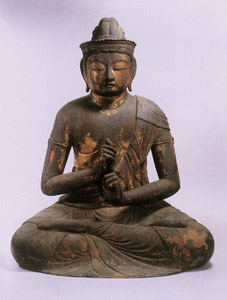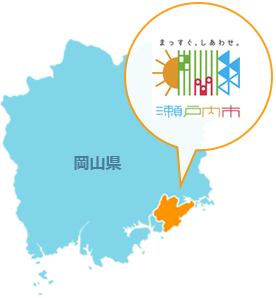本文
Wooden statues of the seated Gochi Nyorai (Five Buddhas of Wisdom). 5 statues.
Wooden statues of the seated Gochi Nyorai (Five Buddhas of Wisdom). 5 statues.
 Dainichi Nyorai
Dainichi Nyorai
Nationally Designated Important Cultural Property of Japan (designated 1917)
Made: Late Heian period (12 th century)
Tōjuin temple, Senzu, Ushimado
Lacquer and gold leaf on wood
Dimensions: Height: 92.3cm (Dainichi Nyorai); ~52.0cm (other 4 statues)
This is a set of Gochi Nyorai, featuring the four Buddhas Ashuku Nyorai, Hōshō Nyorai, Amida Nyorai, and Fukūjōju Nyorai, arranged East, South, West, and North respectively, with the Dainichi Nyorai in the center. The latter’s hand gesture, referred to as ‘chikenin’ in Japanese, is most commonly seen in images of Dainichi in the Mandala of the Diamond World.
The bodies are believed to have been made of cypress, then gilded with gold leaf, with lacquer used as a size (gilding adhesive). The head and body were made as a single item from the same piece of wood, then split vertically, hollowed out to dry and stabilize the wood, then joined back together. The shoulders and knees were made separately and then attached to the torso. Based on the style of construction, the statues were likely made in the 12th century. It is rare for a set of Gochi Nyorai made in the Heian period (late 8th – 12th c. CE) to have been preserved at a local level.





